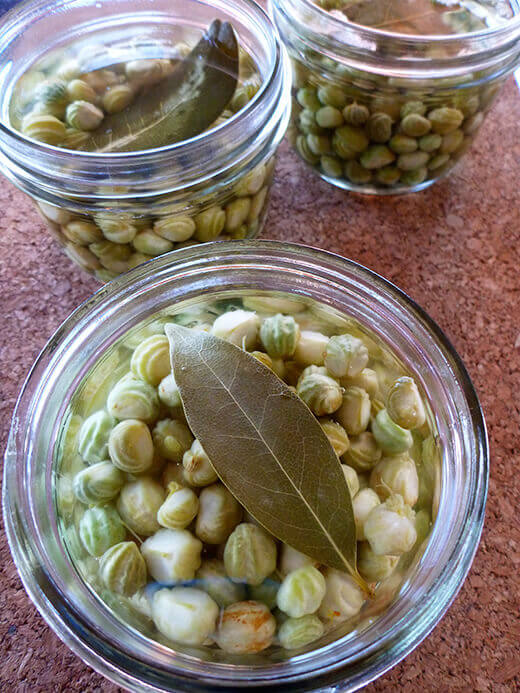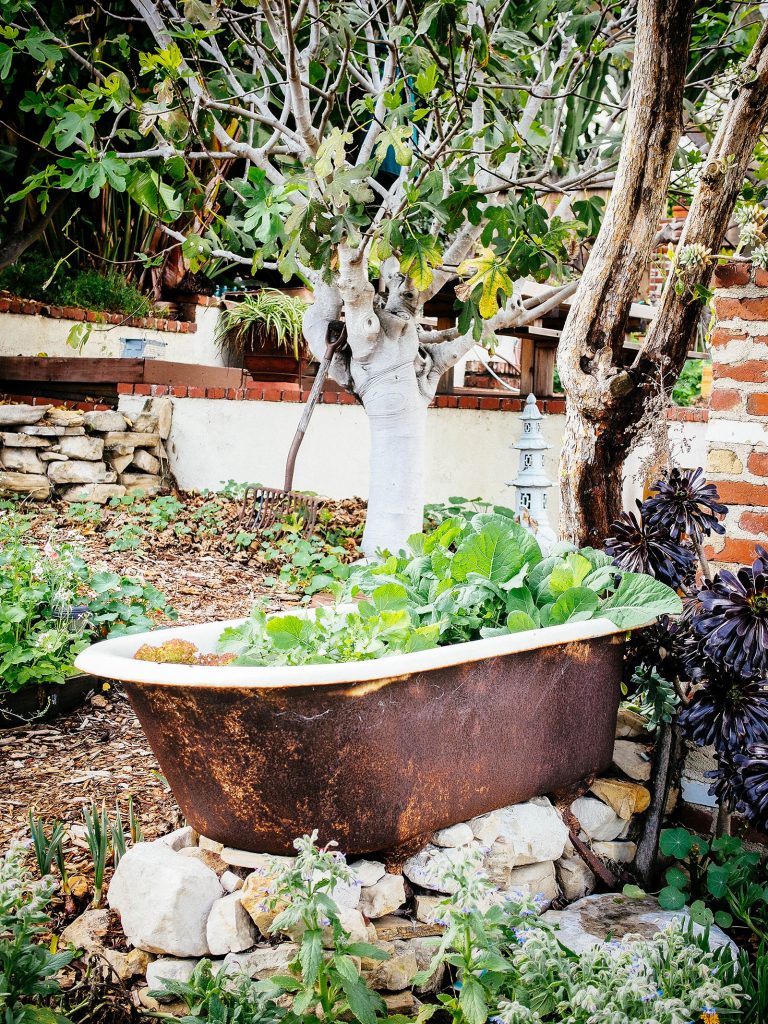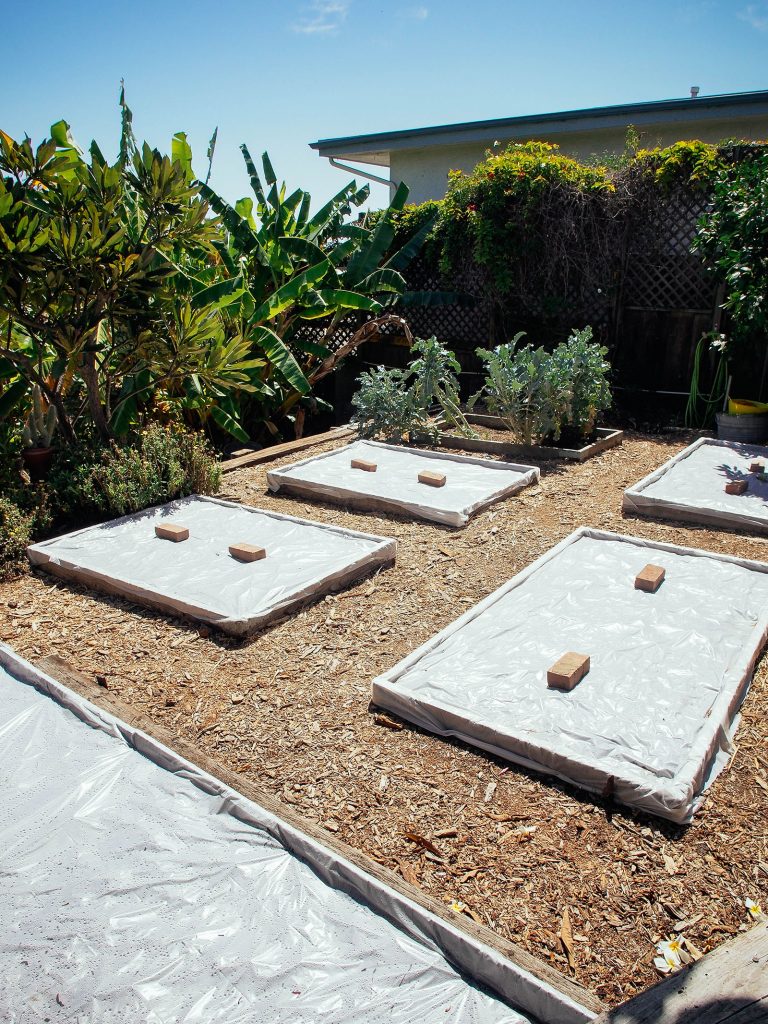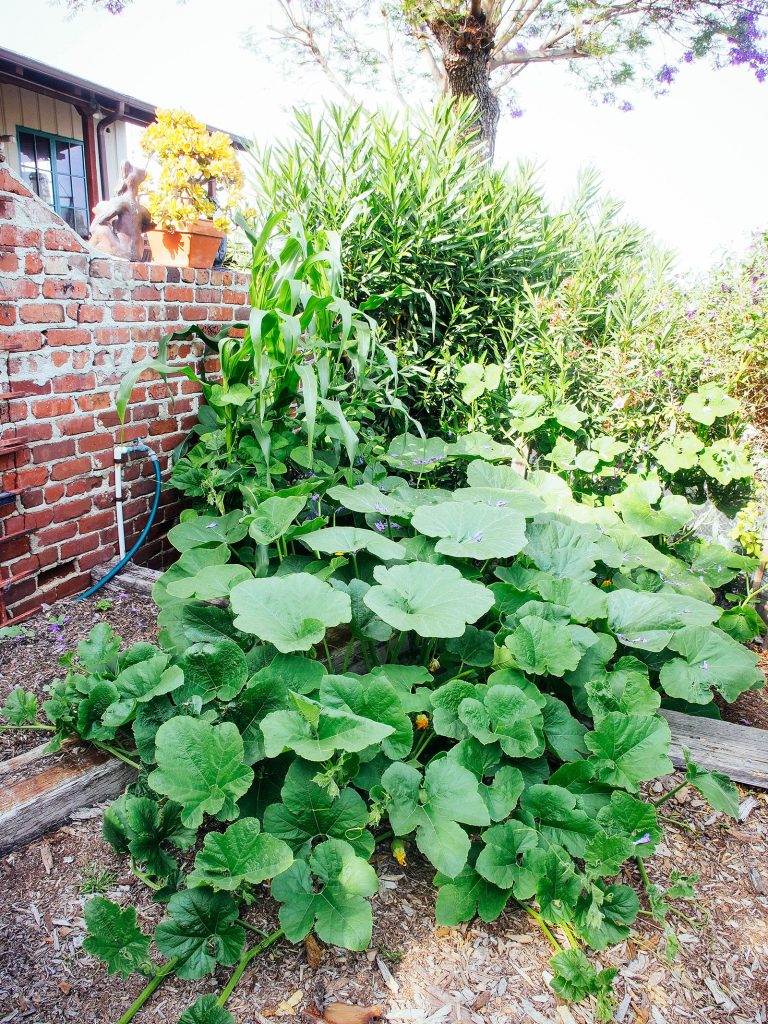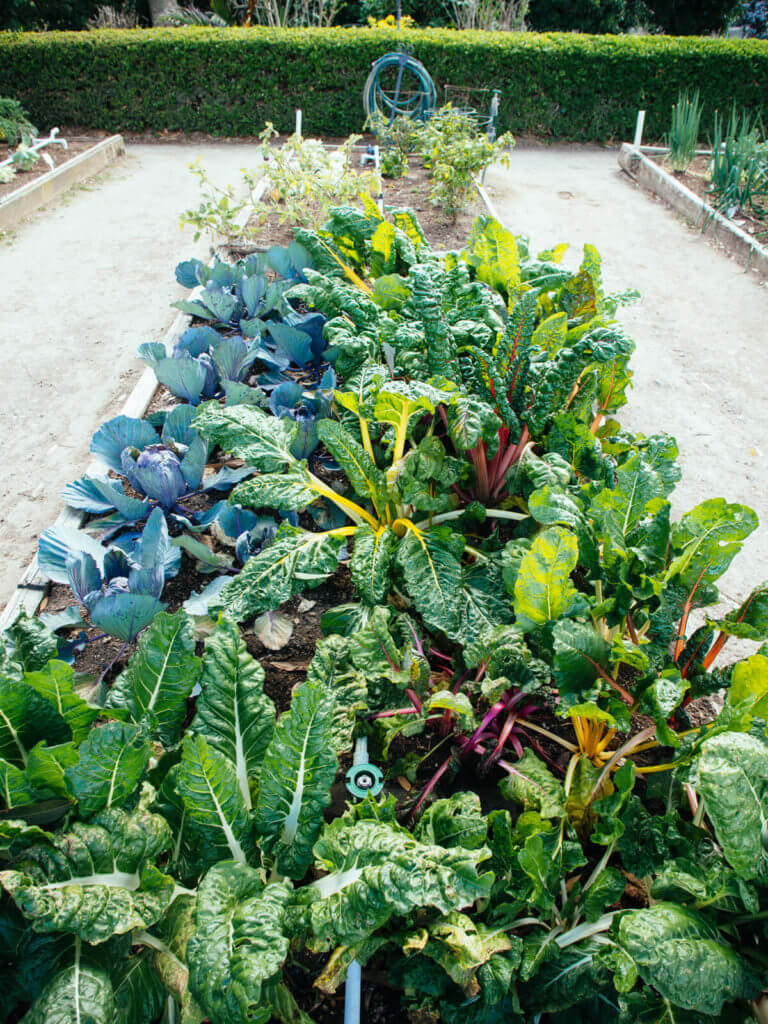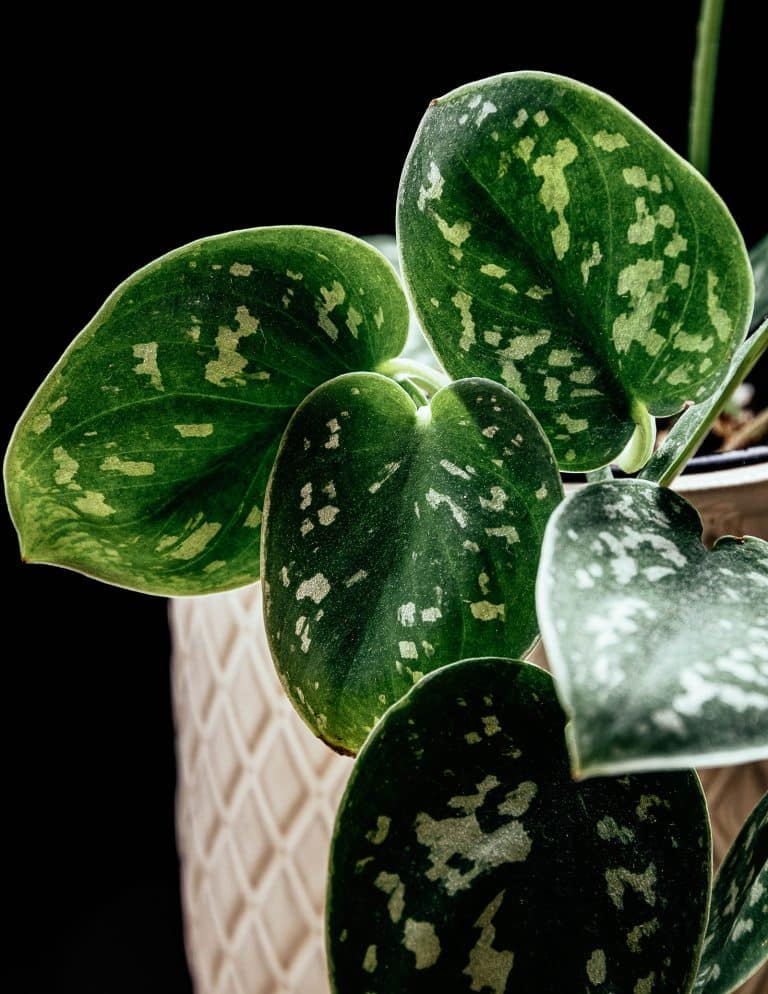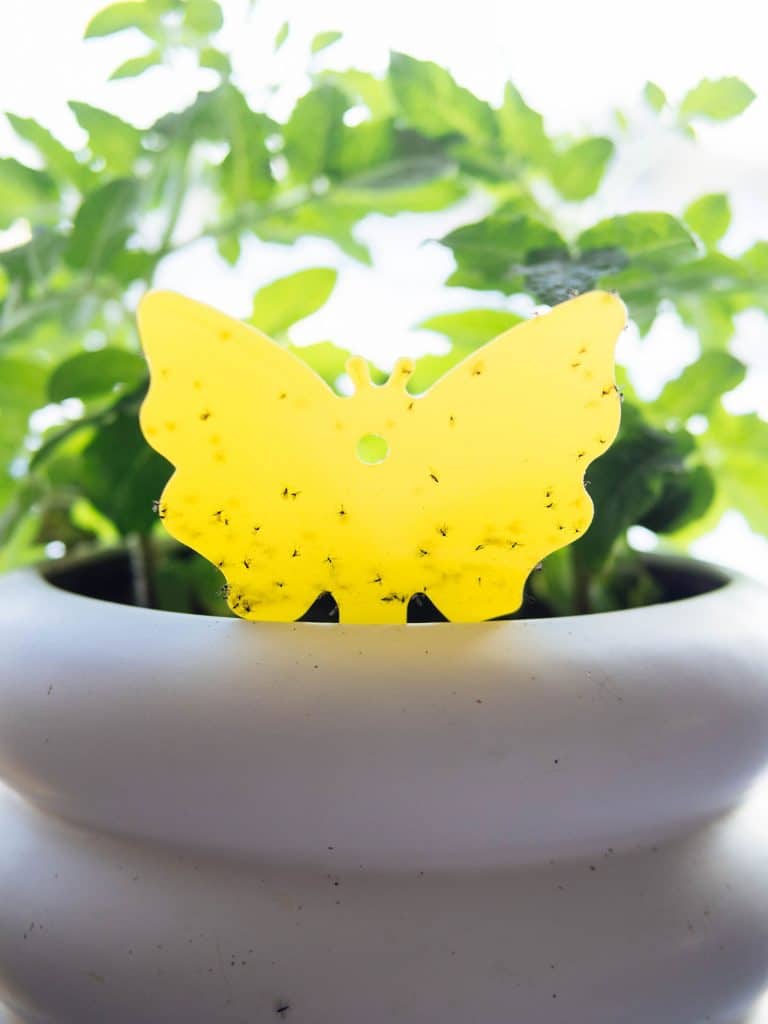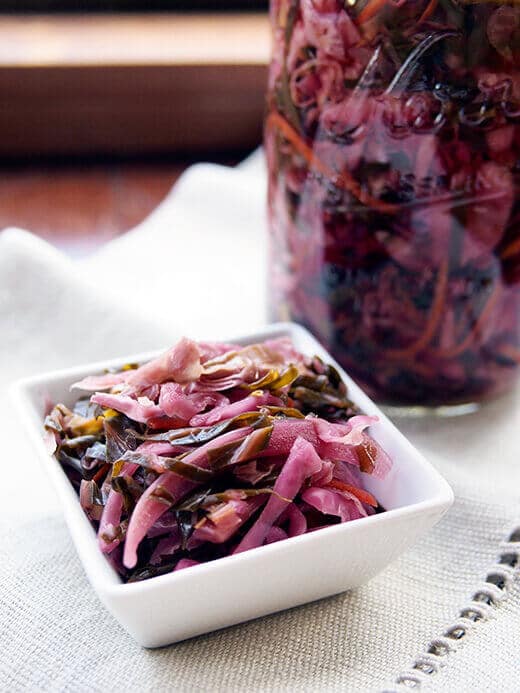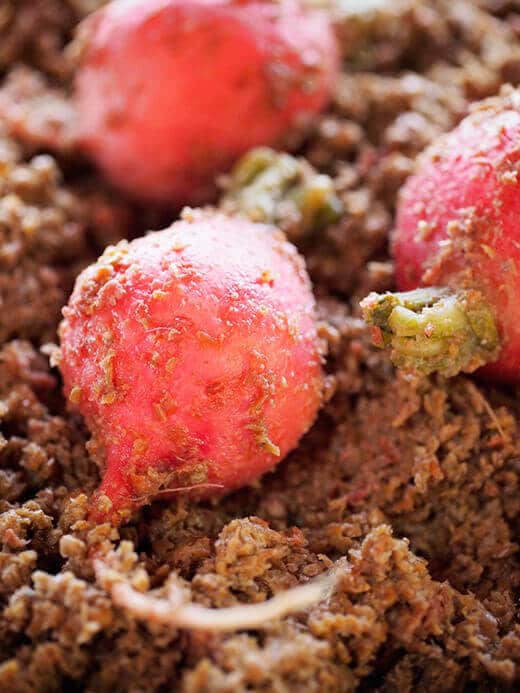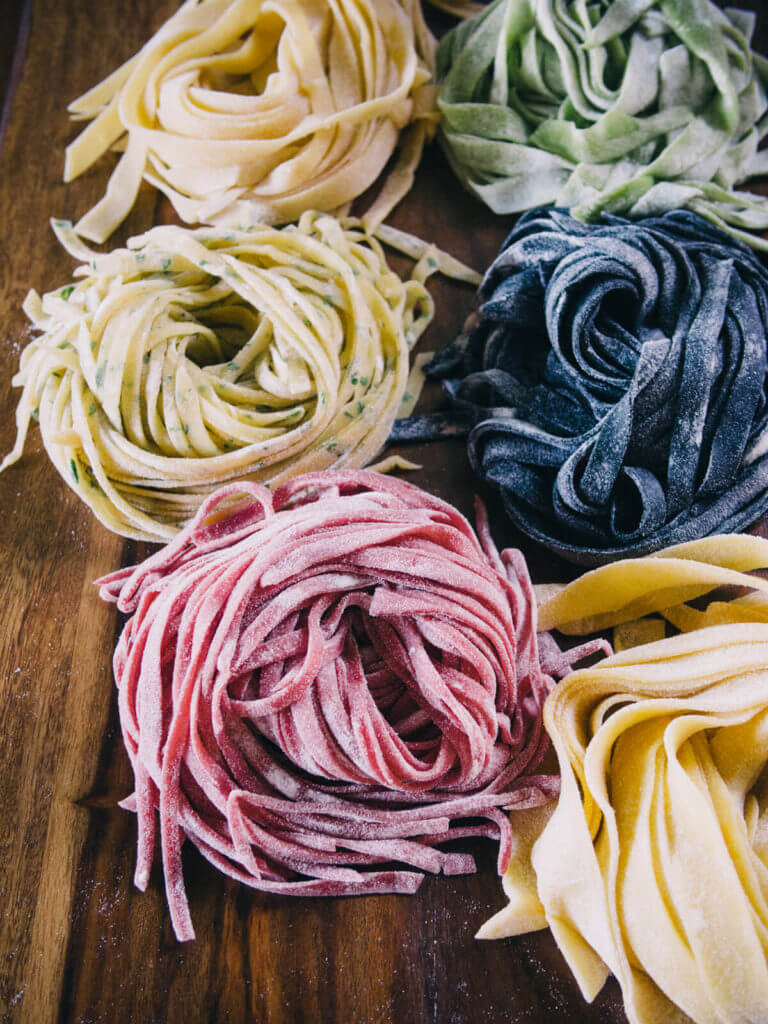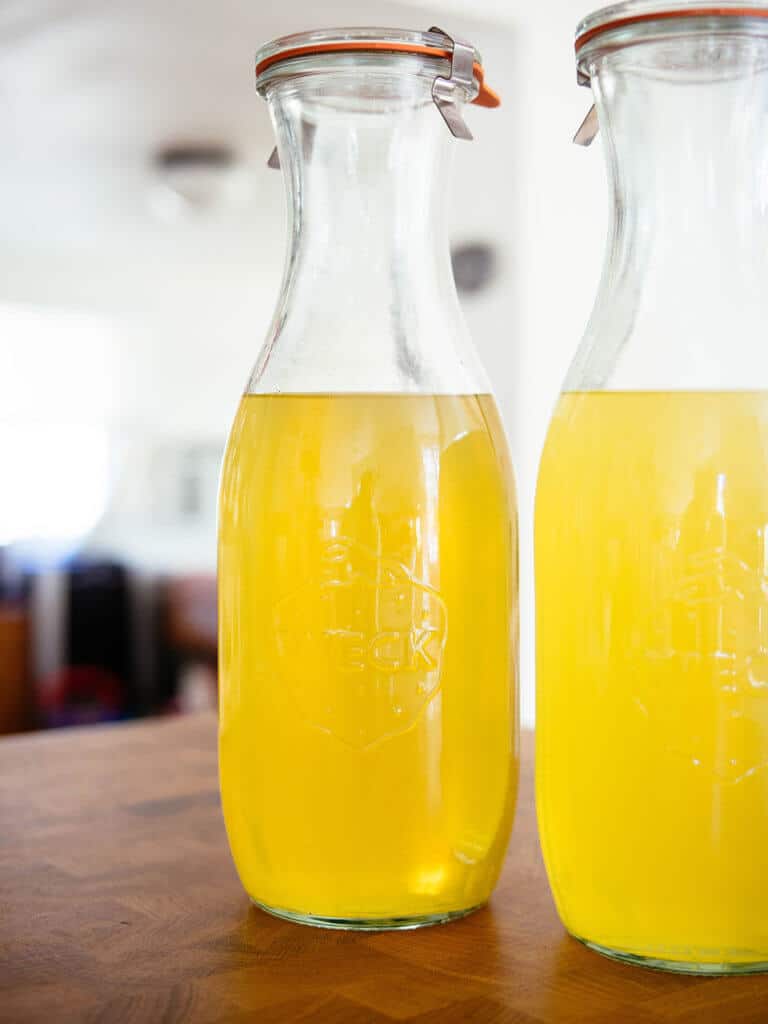Here in Los Angeles, nasturtiums are wildly weedy, growing all over hillsides and gardens and reseeding with wanton abandon. This weediness makes them very underappreciated as a bona fide vegetable, and even more so as a pickled delicacy.
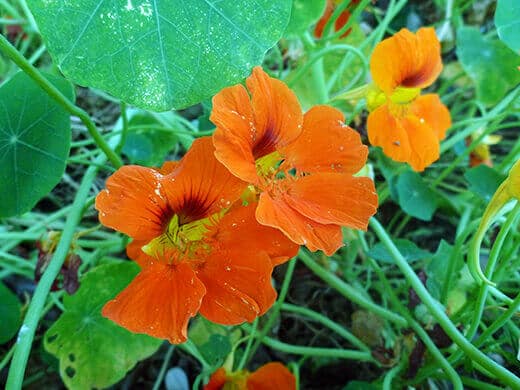
While much of the country doesn’t see the seed pods until late summer (when intense heat causes nasturtiums to wither away), we Angelenos see a succession of flowering nasturtiums year-round, giving us seed pods even in winter.
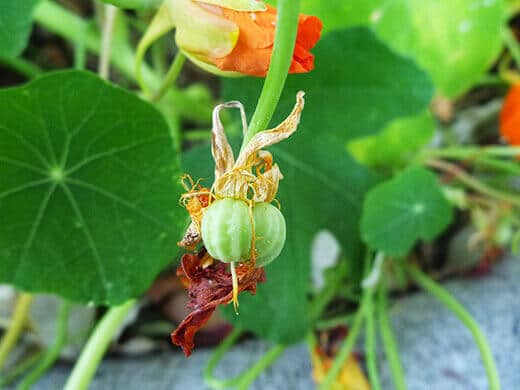
Those delicate green pods emerge after the blossoms have faded, appearing in clusters of three on the stems. Before you yank your plants out, hunt for those little pods to get one last use out of your nasturtium crop! You don’t need more than a handful to turn them into tasty “capers,” and though they’re sometimes called poor man’s capers, they have a distinct, mustardy flavor all their own.
This recipe makes a half-pint at a time. If you were lucky enough to harvest more than a handful, simply double, triple or quadruple the following measurements as needed.
Pickled Nasturtium Pods
Makes 1/2 pint
Ingredients
2/3 cup nasturtium seed pods
1/4 cup salt
2 cups water
2/3 cup distilled white vinegar (5% acidity)
1 teaspoon sugar
1 bay leaf
Making Your Pickled Nasturtium Pods
Harvest young, light green, half-ripened seed pods while they’re still on the vines. Young pods are crisp and juicy, but tend to lose their zip and flavor as they mature (eventually, they dry out into wrinkled brown seeds and drop to the ground).
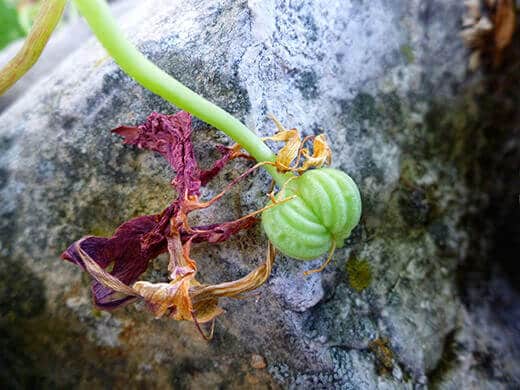
Separate the pods into individual seeds, and give them a quick rinse to remove any dirt.
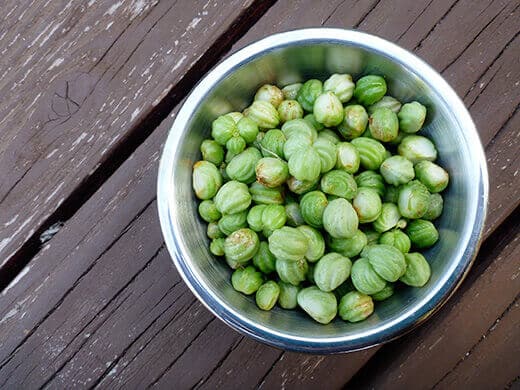
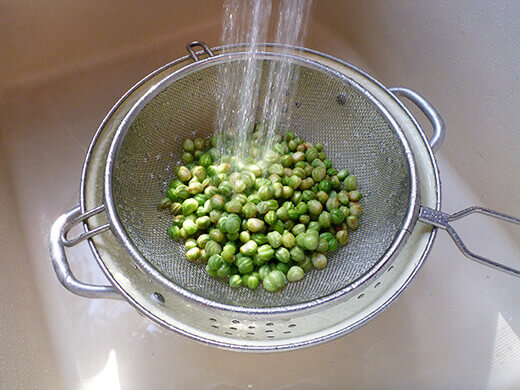
The raw seeds are full of potent mustard oils that make them bitterly strong in flavor; a little too strong for my liking, so I start by mellowing them out in a simple salty brine.
In a quart jar, dissolve the salt in water.
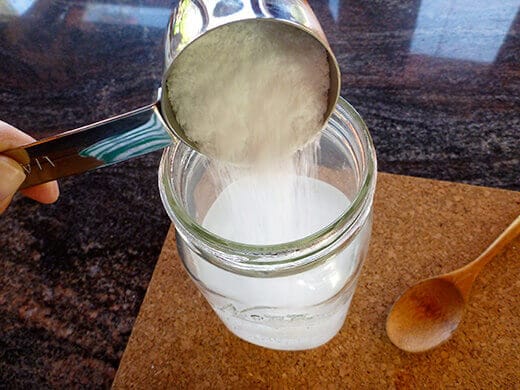
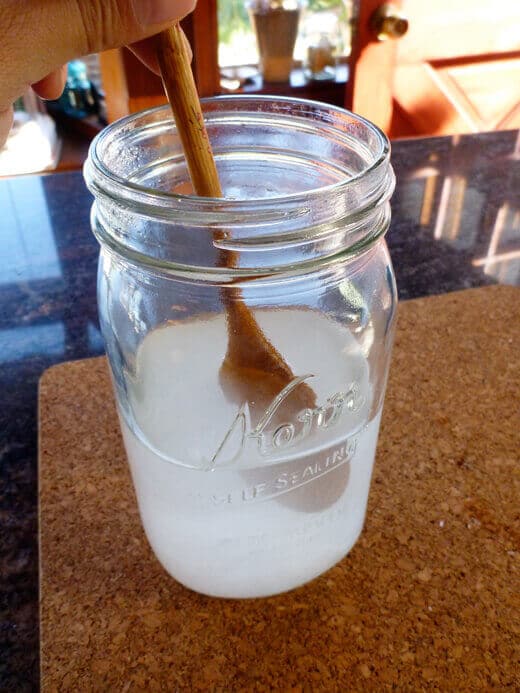
Add the nasturtium seeds, then place a zip-top bag over the rim and down into the jar to keep the seeds submerged. Let the brine sit for a couple of days at room temperature. The seeds will turn a dull green during this stage.
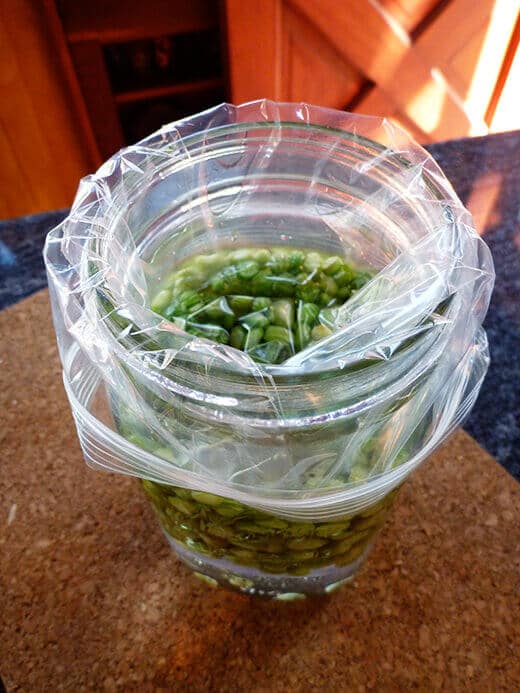
Strain the seeds and rinse again to remove excess salt.
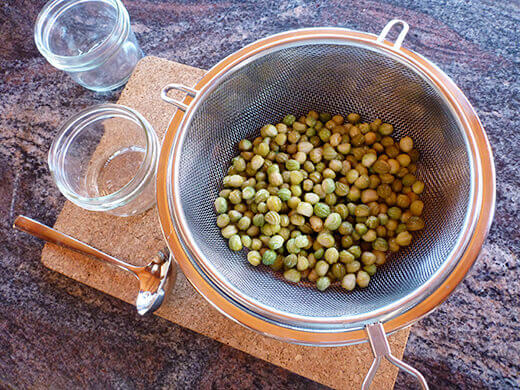
In a small saucepan over medium-high heat, bring the vinegar and sugar to a low boil for 1 minute and stir to dissolve.
Divide your seeds into half-pint jars, then pour the hot vinegar over the seeds, covering them completely.
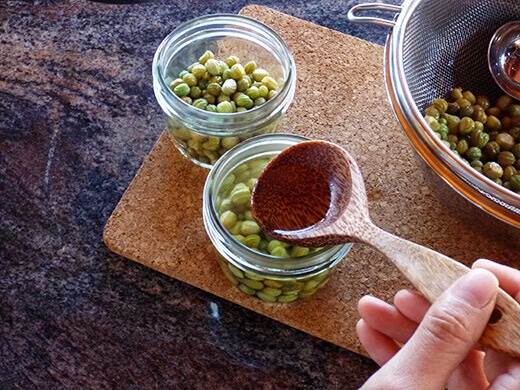
Add a bay leaf to each jar.
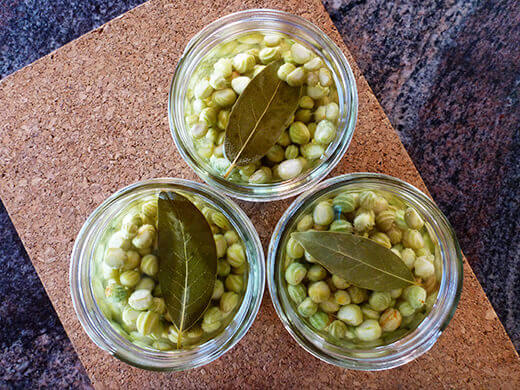
Let the jars cool to room temperature before sealing with lids. At this point, you can either keep the jars at room temp (no need to fire up the boiling water bath), or store them in the fridge.
The pickled pods will keep indefinitely in the vinegar; I still have a jar left from a big batch I made almost two years ago, sitting in my pantry unspoiled. (Just make sure you use a clean utensil each time you scoop out seeds!)
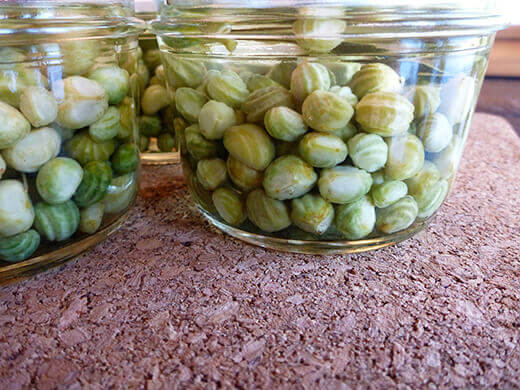
Nasturtium capers have a nose-tingling bite that pairs well with spicy dishes, such as Asian stir-fries or sushi rolls. To use them, spoon out a few seeds and chop them up finely. You can add them to any dish where you’d typically use traditional capers — pastas, sauces, salads, dressings. A little goes a long way!
Pickled Nasturtium Pods
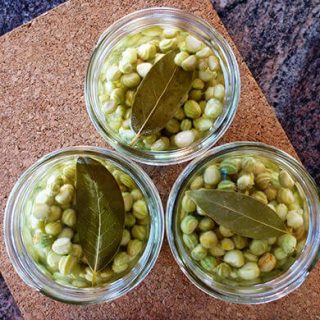
Before you yank your plants out, hunt for those little pods to get one last use out of your nasturtium crop! You don’t need more than a handful to turn them into tasty “capers,” and though they’re sometimes called poor man’s capers, they have a distinct, mustardy flavor all their own.
Ingredients
- 2/3 cup nasturtium seed pods
- 1/4 cup salt
- 2 cups water
- 2/3 cup distilled white vinegar (5% acidity)
- 1 teaspoon sugar
- 1 bay leaf
Instructions
Harvest young, light green, half-ripened seed pods while they’re still on the vines.
Separate the pods into individual seeds, and give them a quick rinse to remove any dirt.
The raw seeds are full of potent mustard oils that make them bitterly strong in flavor; a little too strong for my liking, so I start by mellowing them out in a simple salty brine.
In a quart jar, dissolve the salt in water.
Add the nasturtium seeds, then place a zip-top bag over the rim and down into the jar to keep the seeds submerged.
Let the brine sit for a couple of days at room temperature. The seeds will turn a dull green during this stage.
Strain the seeds and rinse again to remove excess salt.
In a small saucepan over medium-high heat, bring the vinegar and sugar to a low boil for 1 minute and stir to dissolve.
Divide your seeds into half-pint jars, then pour the hot vinegar over the seeds, covering them completely.
Add a bay leaf to each jar.
Let the jars cool to room temperature before sealing with lids. At this point, you can either keep the jars at room temp (no need to fire up the boiling water bath), or store them in the fridge.
Notes
The pickled pods will keep indefinitely in the vinegar; I still have a jar left from a big batch I made almost two years ago, sitting in my pantry unspoiled. (Just make sure you use a clean utensil each time you scoop out seeds!)
Nasturtium capers have a nose-tingling bite that pairs well with spicy dishes, such as Asian stir-fries or sushi rolls. To use them, spoon out a few seeds and chop them up finely. You can add them to any dish where you’d typically use traditional capers — plates of pasta, sauces, salads, and dressings. A little goes a long way!
Recommended Products
As an Amazon Associate and member of other affiliate programs, I earn from qualifying purchases.


